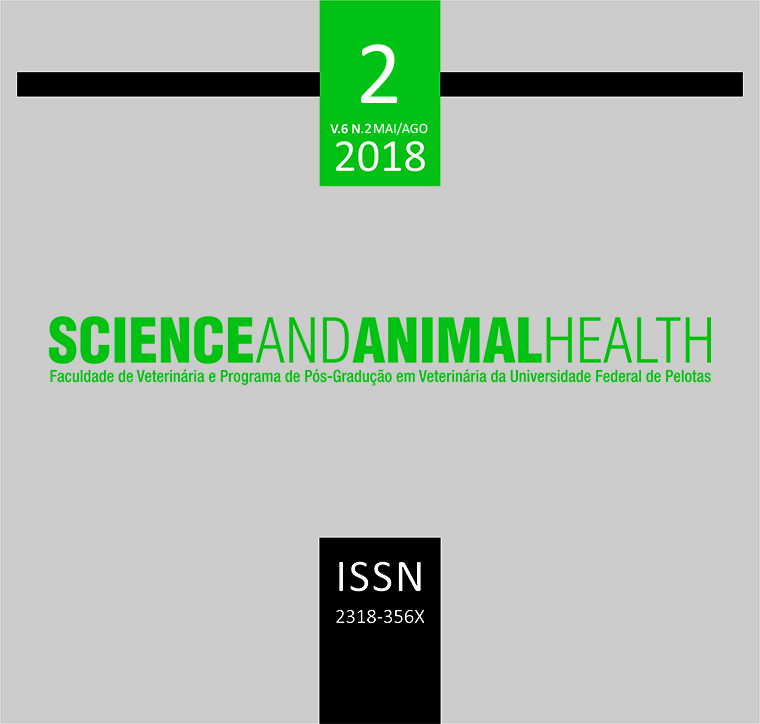DIGESTIBLE LYSINE LEVELS FOR GROWER PHASE BROWN EGG LAYERS
Resumo
The objective was to determine the level of digestible lysine in the grower diet of brown egg layers at two weight categories, and assess the residual effect of the grower diet on the laying phase. A total of 400 13-week-old brown egg layers were used, in a randomized blocks design with a 2 x 4 factorial arrangement (two weight categories x four digestible lysine levels: 5.29, 6.29, 7.29 and 8.29 g/kg), with five replications and 10 birds per experimental unit. A metabolism assay was carried out during the 17th week of age. Body weight, feed intake, feed conversion and weight gain were evaluated between 23 and 35 weeks; and egg quality was assessed during three 28-day periods. Data were subjected to analysis of variance and polynomial regression. No link was found between layer weight categories and lysine levels in grower diet for all studied variables. Nitrogen balance increased as digestible lysine was added to diets. There was no effect of digestible lysine on weight gain and precocity of production. Birds in the standard weight category were more precocious and had higher egg production and weight during the laying phase. Digestible lysine levels in diet did not influence performance and egg quality during the laying phase. A level of 5.2 g/kg of digestible lysine is recommended in grower diet (13 to 20 weeks of age) for brown egg layers, which corresponds to an intake of 550 mg/bird/day.



